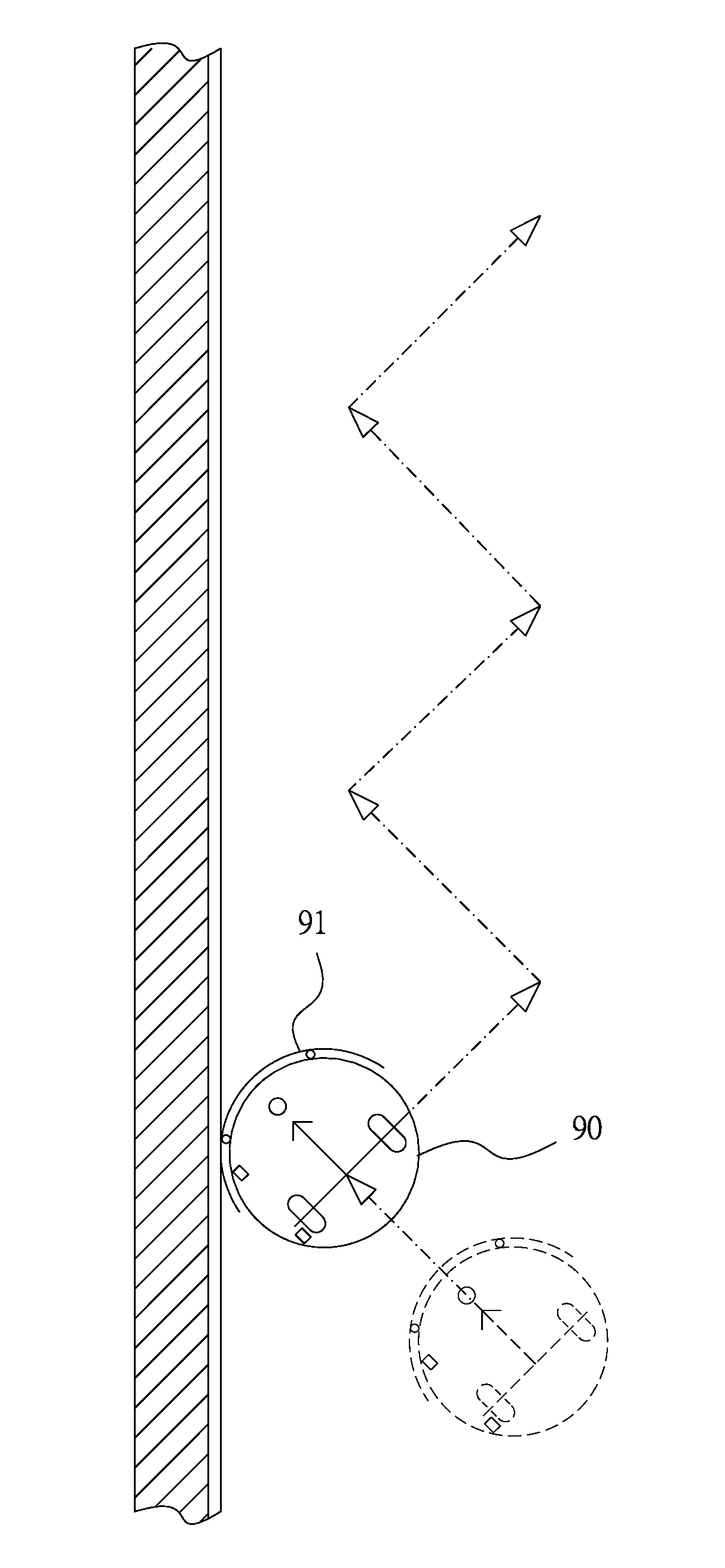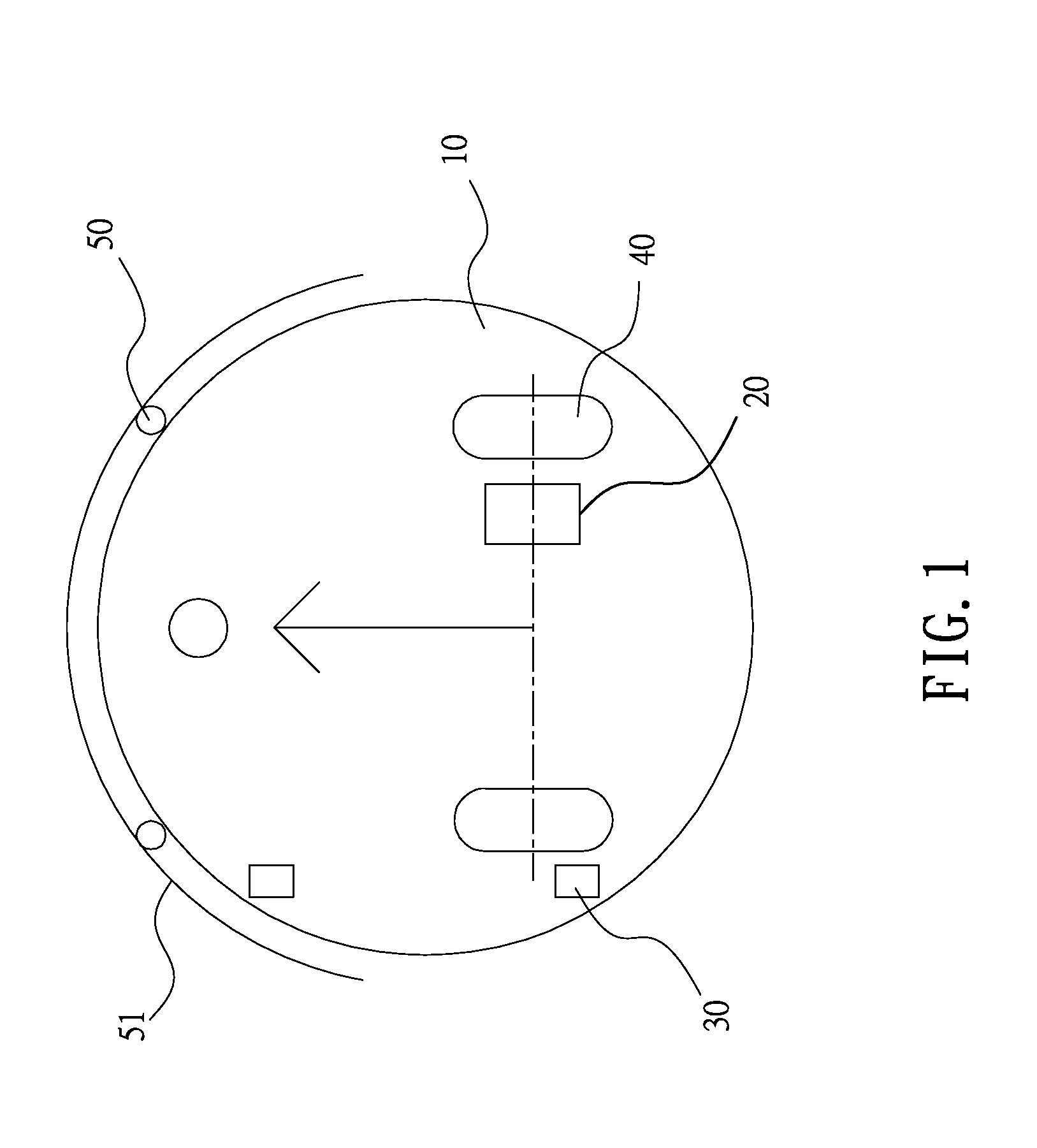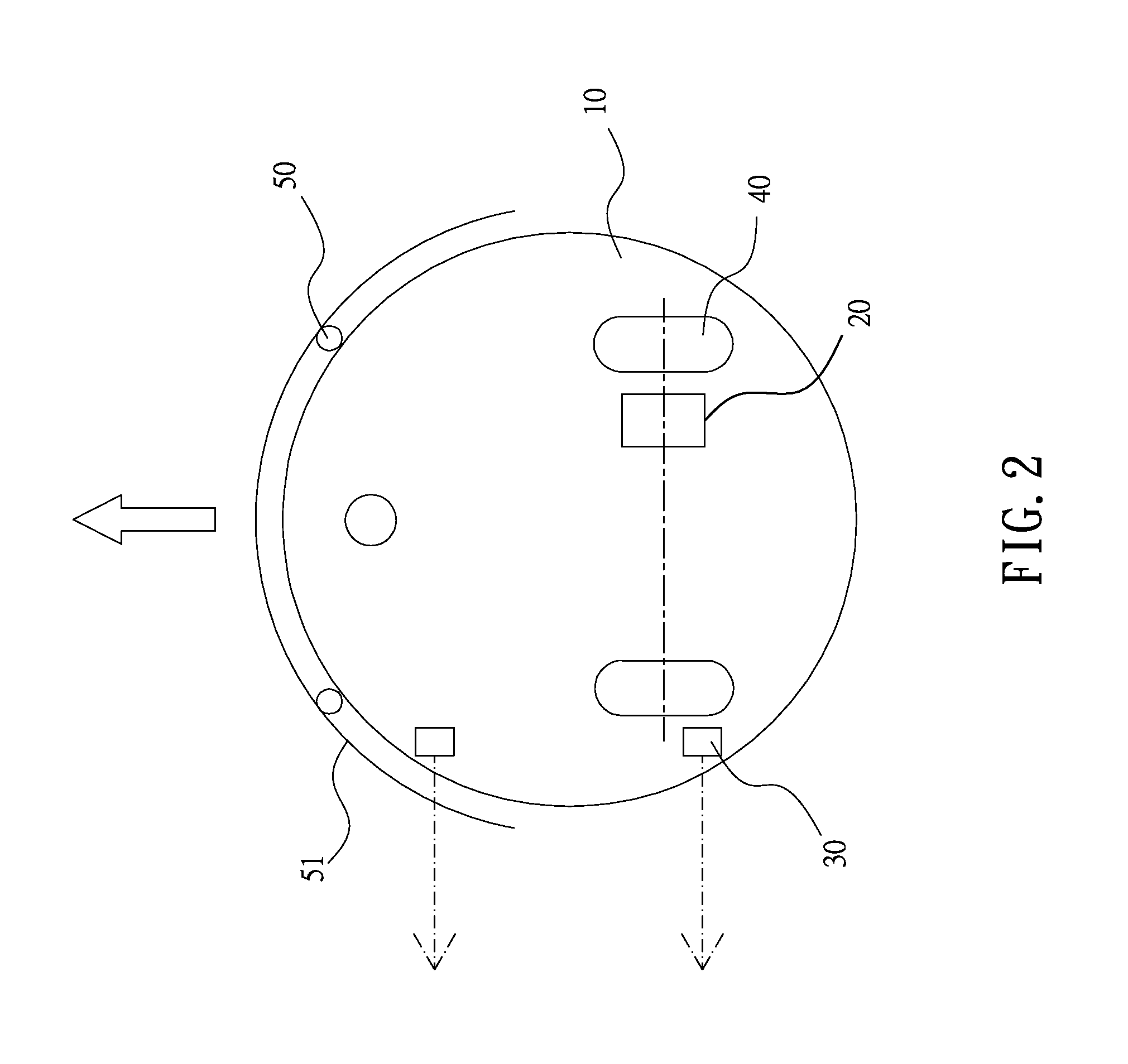Wall-following Moving Device
a moving device and wall-following technology, applied in the direction of distance measurement, process and machine control, instruments, etc., can solve the problems of adversely affecting the accuracy of the measured distance, the collision protection mechanism is not able to measure the distance between the robot b>90, > and the obstacle,
- Summary
- Abstract
- Description
- Claims
- Application Information
AI Technical Summary
Benefits of technology
Problems solved by technology
Method used
Image
Examples
Embodiment Construction
[0026]Please refer to FIG. 1 that is a schematic plan view showing the structure of a wall-following moving device according to a preferred embodiment of the present invention. The wall-following moving device of the present invention can be mounted to a bottom of a robot to control the robot moving indoors to move along an obstacle, such as a wall, with a constant distance from the obstacle, so that a cleaning robot, for example, can clean wall corners and perform other movements. As shown, the wall-following moving device according to a preferred embodiment of the present invention includes a base 10, a determining drive unit 20, two signal transceiver units 30, a moving element 40, and multiple collision sensing units 50. The base 10 is mounted to a bottom of a robot and may be circular.
[0027]The determining drive unit 20 is mounted on the base 10 and is an electronic device with multiple encoders connected to the moving element so as to serve as a motion central control unit. Wh...
PUM
 Login to View More
Login to View More Abstract
Description
Claims
Application Information
 Login to View More
Login to View More - R&D
- Intellectual Property
- Life Sciences
- Materials
- Tech Scout
- Unparalleled Data Quality
- Higher Quality Content
- 60% Fewer Hallucinations
Browse by: Latest US Patents, China's latest patents, Technical Efficacy Thesaurus, Application Domain, Technology Topic, Popular Technical Reports.
© 2025 PatSnap. All rights reserved.Legal|Privacy policy|Modern Slavery Act Transparency Statement|Sitemap|About US| Contact US: help@patsnap.com



